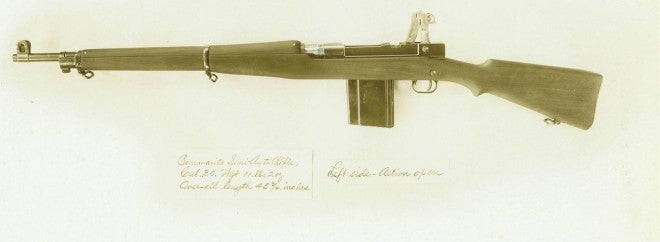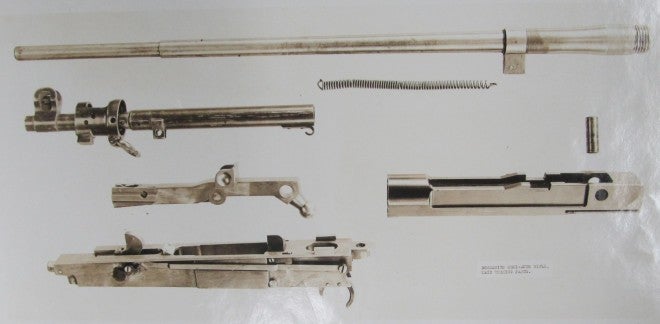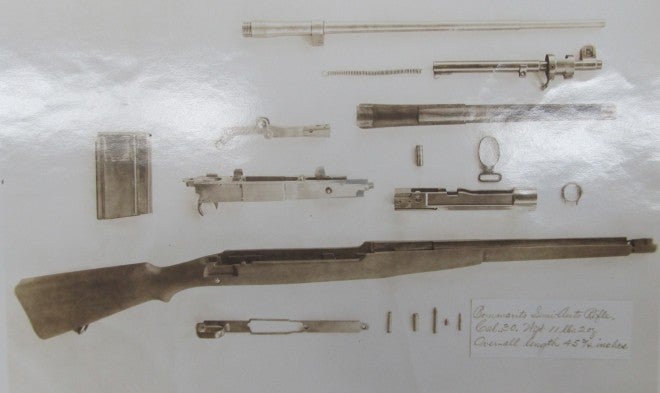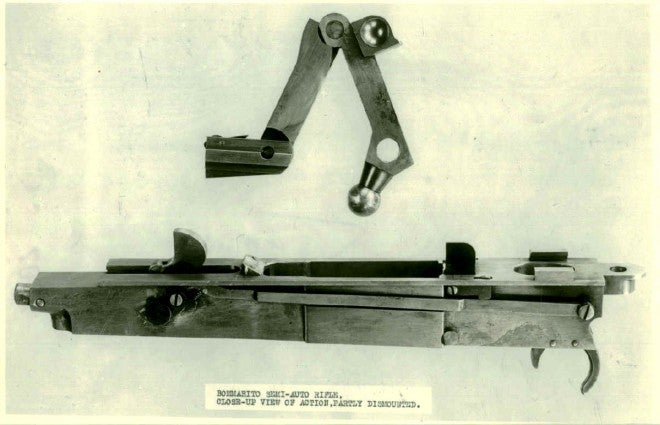As our regular readers have by now guessed, early selfloading rifle design is a major point of interest for me. It’s not well-known, but before the US entrance into World War I, Ordnance was extremely interested in procuring a self-loading rifle design to arm US troops in combat. A significant round of tests followed as a result, and between 1910 and 1917, the US government tested designs from Standard Arms Co, Dreyse, Kjellman, Benet-Mercie, Rock Island Arsenal, Bang, Mauser, Mondragon, Rychiger, St. Etienne (what would become the RSC 1917), Stergian, and Liu, at least. One other rifle tested during this period was the Bommarito rifle, on which Forgotten Weapons has posted an article with description and photos.
The Bommarito is described thusly in the Handbook of Ordnance Data:
This rifle is of the recoil-operated type, with a toggle breech bolt, similar to the Luger pistol. The barrel recoil is 1-1/4 inches and this, with the long toggle levers necessitated by the length of the service cartridge, render the rifle a very unwieldy one, with grave danger of injury to the firer’s hands in use. In August, 1918, however, a contract was awarded for the construction of a test rifle.
Interestingly, the Bommarito was fed by 20-round detachable box magazines, something that the Army would in the 1920s shy away from. Pictures of the Bommarito, provided by our own Miles Vining, can be found below:
 Your Privacy Choices
Your Privacy Choices




